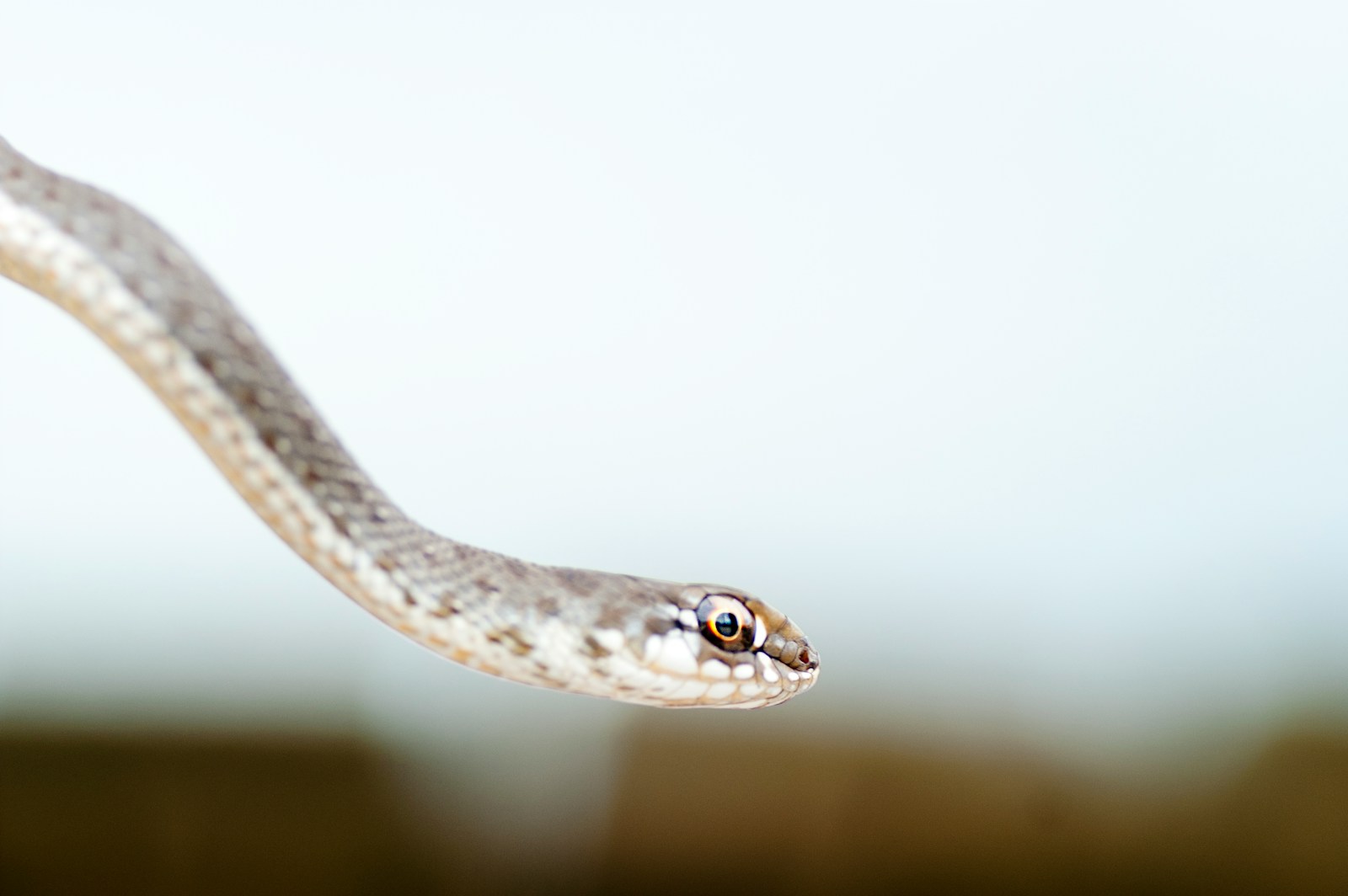In the diverse world of reptiles, snakes have demonstrated remarkable adaptability, establishing populations in environments that challenge our understanding of their ecological limitations. While we typically associate these slithering creatures with tropical rainforests, deserts, or grassy plains, non-venomous snakes have been discovered thriving in some of the most unexpected and extreme habitats on our planet. From the freezing Arctic to urban skyscrapers, these resilient reptiles have developed fascinating adaptations that allow them to colonize spaces we’d never imagine suitable for cold-blooded organisms. This exploration into the most unusual habitats where non-venomous snakes have been found reveals not only their extraordinary survival capabilities but also provides valuable insights into the ongoing evolution and ecological flexibility of these remarkable animals.
Deep Underground Cave Systems
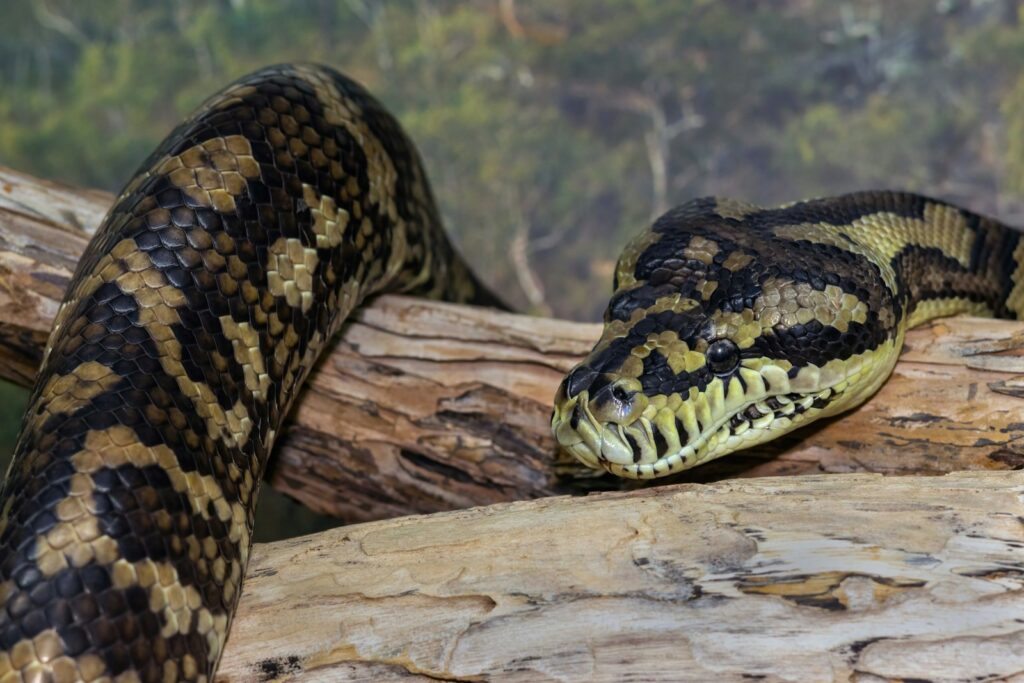
Several species of non-venomous snakes have been discovered thriving in extensive cave networks hundreds of feet below the Earth’s surface, creating some of the most unusual snake habitats ever documented. In these perpetually dark environments, species like the Texas Blind Snake (Rena dulcis) have evolved reduced eyes, specialized sensory organs, and unique hunting strategies to navigate and survive without light. These subterranean snakes typically feed on soft-bodied invertebrates such as termites, ant larvae, and earthworms that also inhabit these underground ecosystems. Perhaps most remarkably, studies have found that some cave-dwelling snakes have developed metabolic adaptations allowing them to survive on significantly fewer meals than their surface-dwelling relatives, sometimes going months between feedings in these resource-limited environments.
Urban Skyscrapers and High-Rises
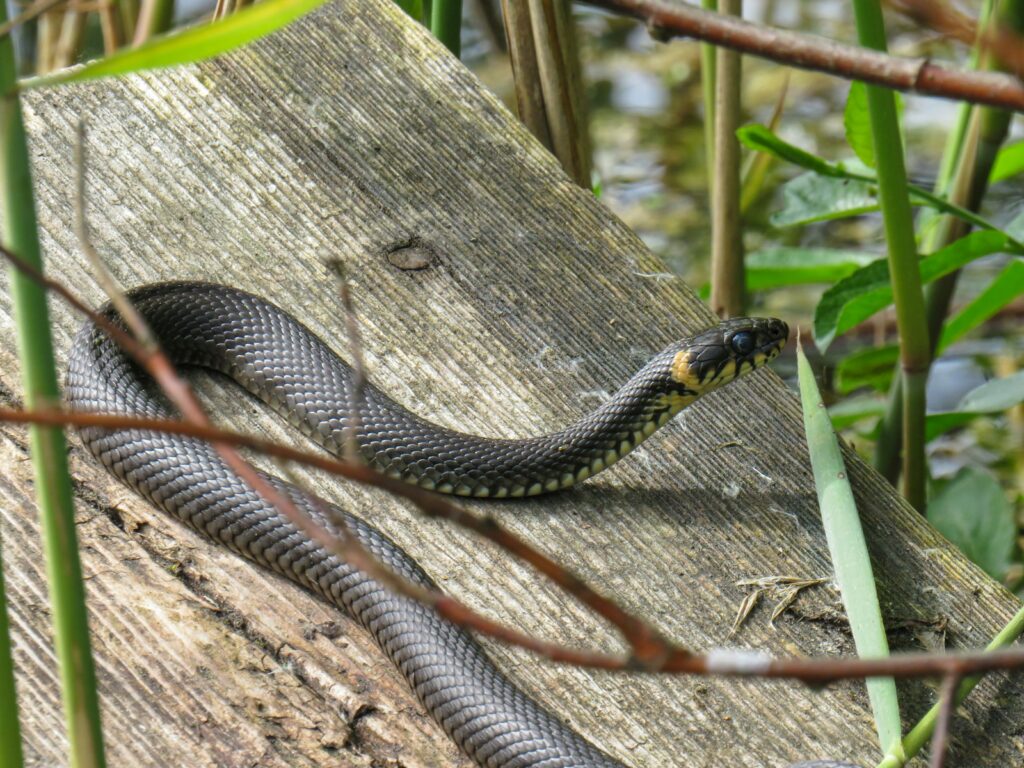
In an astonishing display of adaptability, several non-venomous snake species have established populations in the vertical concrete jungles of major cities worldwide. Rat snakes and racers have been documented nesting as high as the 30th floor of skyscrapers in cities like New York, Hong Kong, and Singapore, using ventilation systems, wall gaps, and abandoned spaces as their urban territories. These metropolitan reptiles primarily feed on the abundant rodent populations that also thrive in human developments, essentially providing free pest control services to building residents (whether appreciated or not). Researchers studying this phenomenon have found that urban-dwelling snakes often develop unique behavioral adaptations, becoming more nocturnal and developing higher tolerance to human presence and noise than their rural counterparts.
Arctic and Sub-Arctic Regions
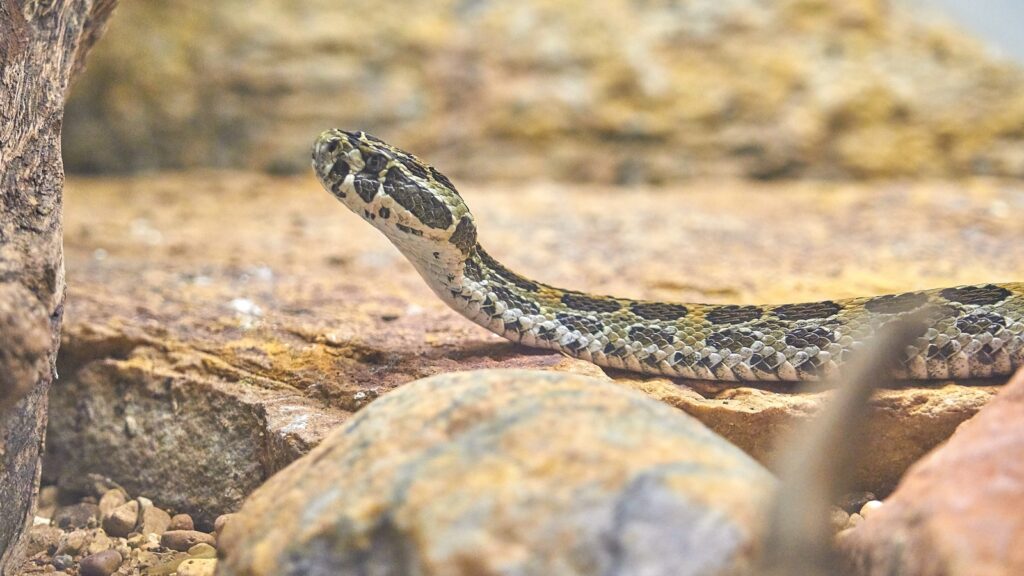
Defying the conventional understanding of snakes as creatures requiring warm environments, several non-venomous species have been documented surviving in sub-arctic and even Arctic regions. The common garter snake (Thamnophis sirtalis) has been found thriving farther north than any other snake species, establishing populations within the Arctic Circle in Alaska and northern Canada where temperatures can plummet to -40°F. These cold-climate specialists have evolved remarkable hibernation strategies, gathering in communal dens called “hibernacula” where thousands of individuals may cluster together for warmth during the winter months. Their biochemistry includes natural antifreeze compounds that prevent fatal ice crystal formation in their tissues, allowing them to survive being partially frozen for months at a time in a state of drastically reduced metabolism.
Floating Ocean Garbage Patches

One of the most unexpected and concerning snake habitats discovered in recent years involves several species of non-venomous water snakes establishing populations on the vast floating garbage patches in our oceans. Marine biologists have documented yellow-bellied sea snakes and certain species of water snakes living among the plastic debris fields in the Pacific and Atlantic Oceans, using the floating refuse as both shelter and hunting grounds. These snakes feed on small fish that are attracted to the artificial ecosystem created by these floating plastic islands, which provide protection from larger predators. The concerning aspect of this adaptation is how quickly it has occurred, with genetic studies suggesting these garbage patch populations have developed specific adaptations to this human-created habitat in fewer than 50 years.
Active Volcanic Areas

Several non-venomous snake species have been found living directly on the slopes of active volcanoes, even in areas with ongoing minor eruptions and constant geothermal activity. The Brahminy blind snake has been documented thriving in the volcanic soils of Hawaii’s Kilauea, while certain species of rat snakes inhabit the geothermally active regions surrounding Mount Fuji in Japan. These heat-loving reptiles take advantage of the consistently warm ground temperatures provided by the volcanic activity, which allows them to maintain optimal body temperature even when ambient air temperatures would otherwise be too cool. Fascinatingly, these snakes have developed scales with higher heat resistance than other snake populations, protecting them from occasional contact with hot volcanic surfaces and steam vents that would cause severe burns to most reptiles.
Abandoned Mine Shafts
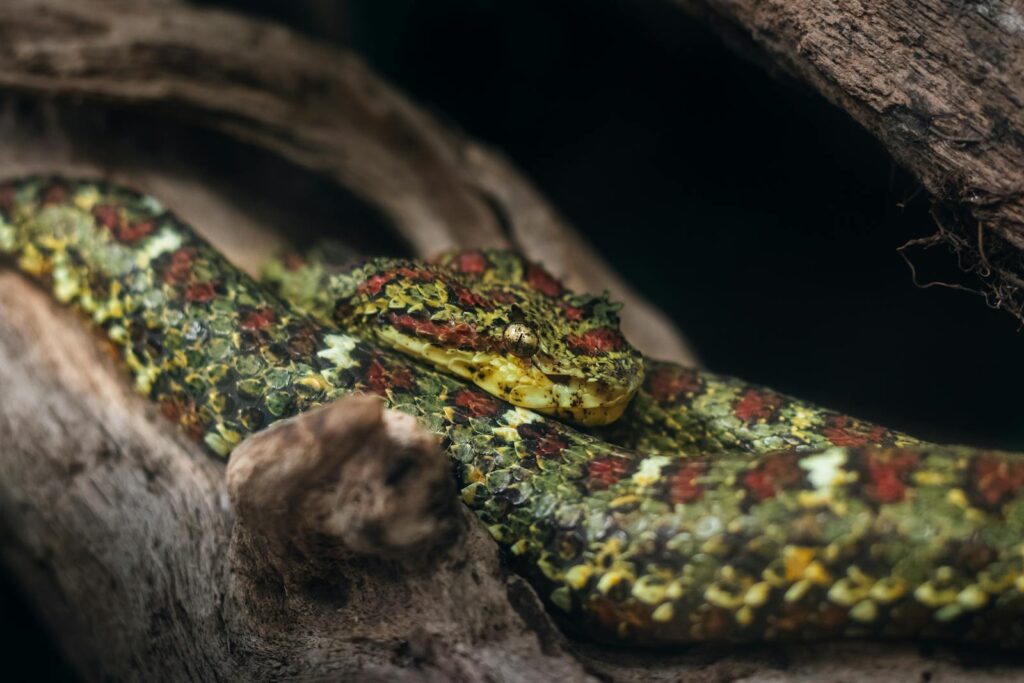
The labyrinthine networks of abandoned mines worldwide have become unusual but increasingly documented habitats for various non-venomous snake species. In the former gold mines of South Africa and copper mines of Arizona, researchers have found thriving populations of rat snakes, kingsnakes, and blind snakes that have adapted to life in these artificial underground environments. These subterranean specialists navigate through the complex tunnel systems hunting for rodents, bats, and invertebrates that also inhabit these human-created caves. The stable temperatures within abandoned mines provide ideal year-round conditions for these cold-blooded creatures, while the absence of natural predators and human disturbance creates a surprisingly safe refuge. Some mine-dwelling snake populations have been isolated long enough to show the beginning stages of unique evolutionary adaptations, including changes in coloration that match the mineral-rich walls of their unusual homes.
Offshore Oil Platforms
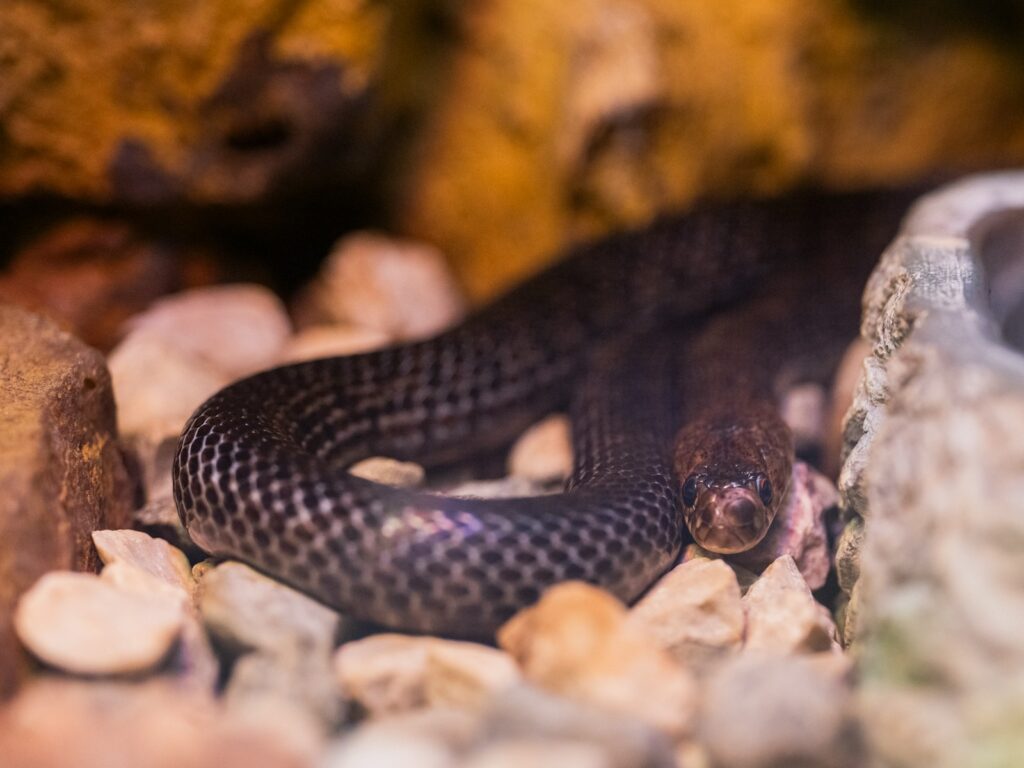
In one of the more surprising habitat adaptations, non-venomous water snakes have established resident populations on offshore oil platforms in the Gulf of Mexico and the South China Sea. These industrial structures, sometimes located more than 100 miles from the nearest land, have become artificial islands where species like the Gulf Coast ribbon snake and certain water snakes have created sustainable colonies. The snakes reach these remote platforms either by swimming or by hitchhiking on supply boats and maintenance vessels, then establishing themselves in the structural elements of the rigs that provide dry resting spaces. They primarily feed on small fish attracted to the artificial reef created by the platform’s underwater supports, as well as seabirds that nest on the upper sections of these structures. Oil rig workers report regularly encountering these unexpected reptilian “colleagues” during routine maintenance operations, with some platforms hosting stable snake populations for decades.
Within Living Trees
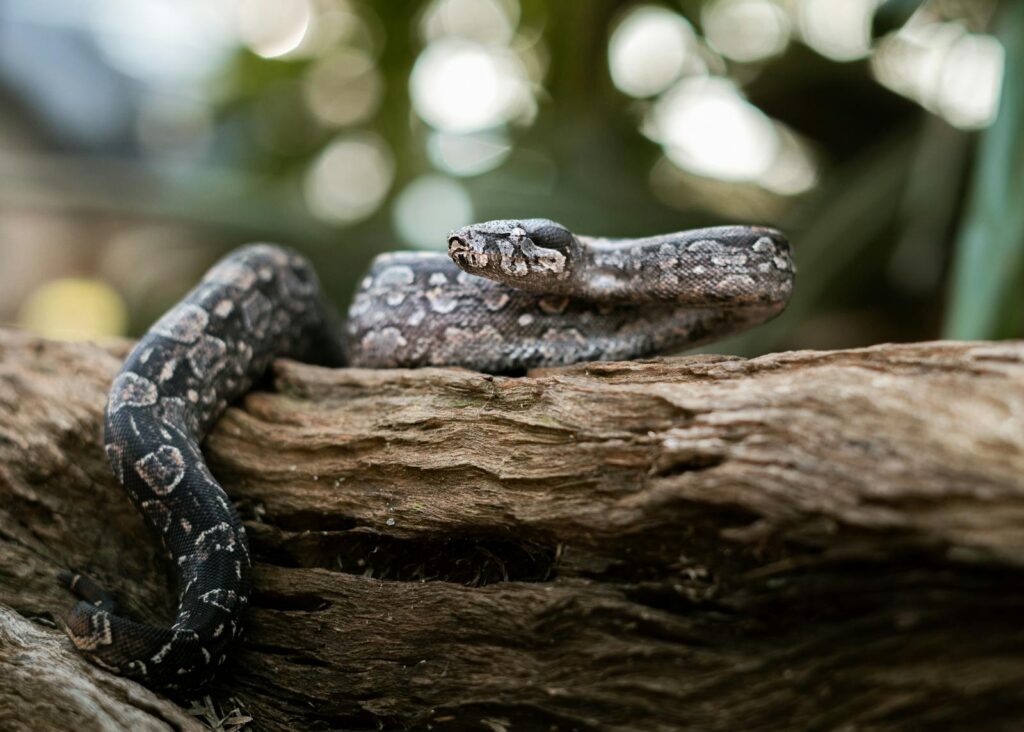
While many snakes climb trees, certain non-venomous species have been discovered living entirely within the trunks and branches of living trees, in spaces created by decay or woodpecker activity. The Western blind snake and certain small colubrid species have been found inhabiting the interior chambers of ancient baobab trees in Africa and hollow sycamores in North America, sometimes several stories above ground level. These arboreal cavity-dwellers have developed specialized scales that allow them to grip the smooth interior surfaces of these wooden chambers, along with hunting techniques adapted for capturing the insects and small vertebrates that share these unique microhabitats. Most fascinating is their adaptation to the limited space – these snake populations tend to be significantly smaller in adult size than their ground-dwelling relatives, an evolutionary response to the spatial constraints of their unusual living quarters.
Desert Oases Hundreds of Miles from Other Populations

Researchers have documented isolated populations of non-venomous snakes surviving in tiny desert oases that have been separated from other water sources by hundreds of miles of inhospitable terrain for thousands of years. In locations like the Sahara’s Siwa Oasis and isolated springs in Death Valley, species such as the North African water snake and certain garter snake populations have become so genetically isolated that they’re evolving into entirely new subspecies. These snake populations have developed remarkable water conservation abilities, including specialized scales that reduce evaporative water loss and modified kidneys that produce highly concentrated urine to retain moisture in these water-limited environments. The most astonishing aspect of these isolated populations is their genetic resilience – despite extremely small founder populations, many have avoided the expected problems of inbreeding through unique genetic mechanisms that scientists are still working to fully understand.
Inside Active Termite Mounds
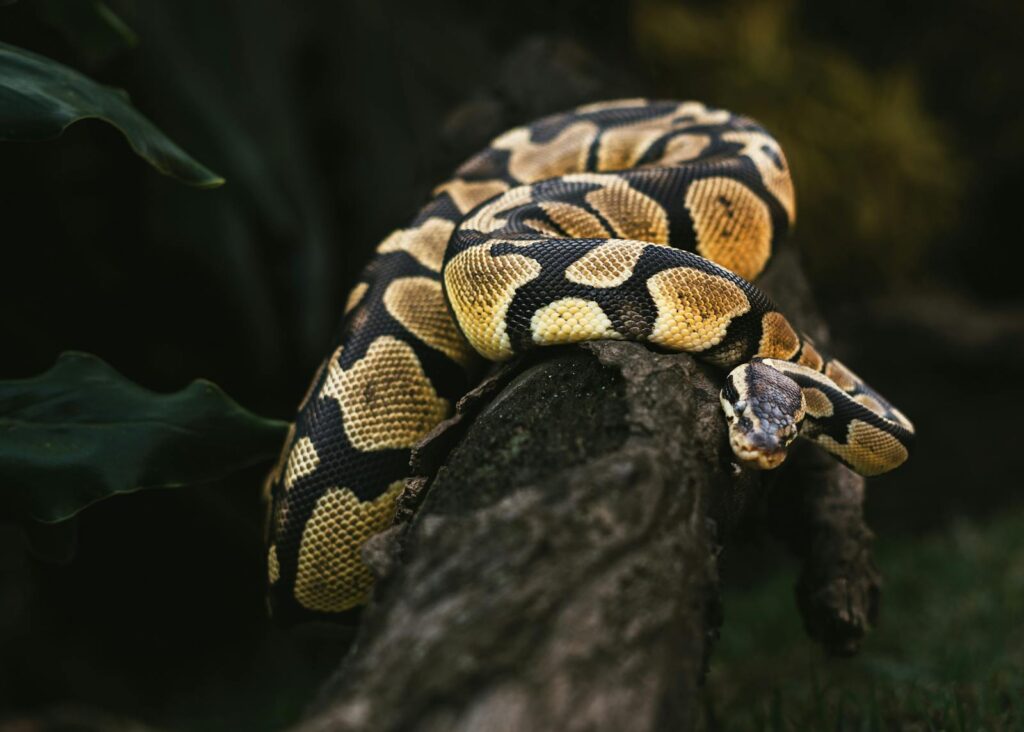
Several species of small non-venomous snakes have evolved the remarkable ability to live inside active termite mounds, creating one of the most unusual predator-prey habitat relationships in the reptile world. Species like the African thread snake and certain blind snake species have been documented creating permanent residences within the complex architecture of termite colonies, where they feed directly on the termites and their larvae while remaining safe from larger predators. These specialized snake species have developed chemical camouflage that masks their presence from the termites, allowing them to move through the colony undetected despite being surrounded by millions of potential alarm-raisers. Their cylindrical body shape and smooth, glossy scales enable them to slide through the narrow termite tunnels with minimal resistance, while their reduced eyes and enhanced chemical sensors help them navigate in the complete darkness of the mound’s interior chambers.
Saltwater Mangrove Forests
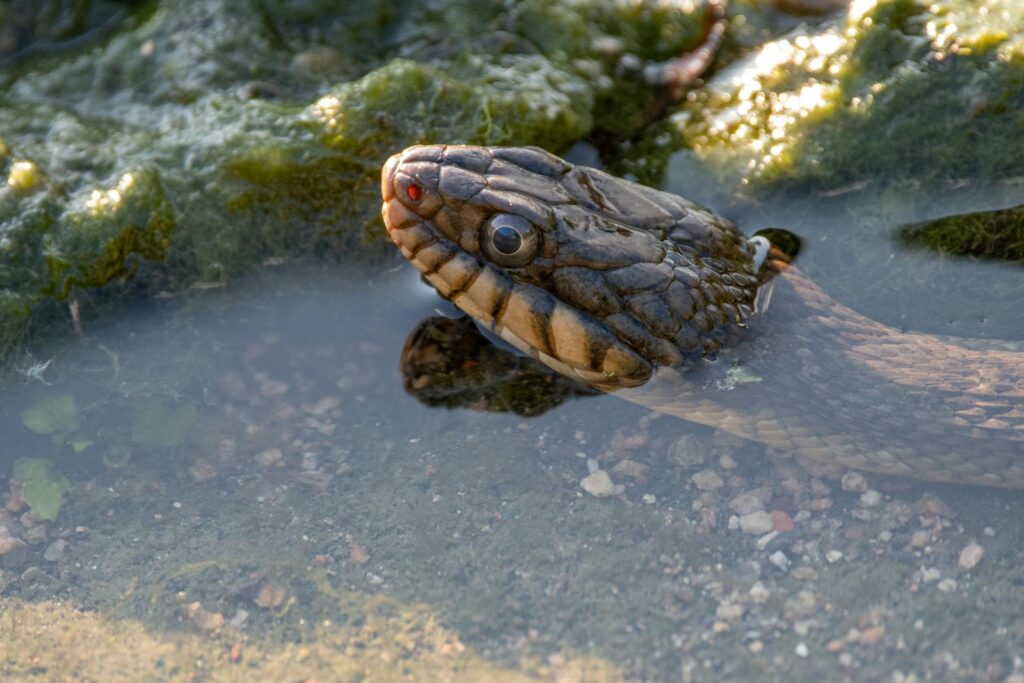
Certain non-venomous snake species have adapted to life in the challenging saltwater environment of mangrove forests, where few reptiles can survive the combination of tidal flooding, high salinity, and low oxygen conditions. Species like the mangrove snake (Boiga dendrophila) and certain water snakes have developed specialized salt glands that allow them to excrete excess salt, similar to the adaptations seen in marine birds and reptiles. These mangrove specialists can often be observed hunting both in the water and along the tangled aerial roots, feeding on crabs, fish, and small birds that also inhabit these coastal forest ecosystems. The most impressive adaptation is their ability to remain underwater for extended periods – some mangrove-dwelling non-venomous snakes can stay submerged for over an hour while hunting or hiding from predators, using specialized blood vessels in their skin to absorb dissolved oxygen directly from the water.
Airplane Wheel Wells
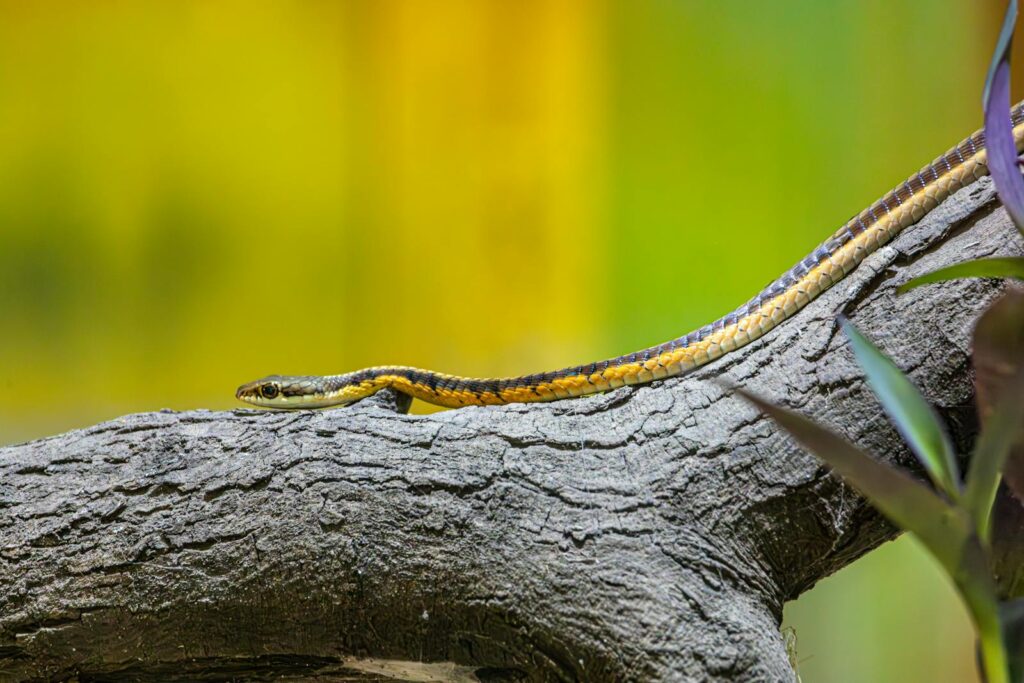
In perhaps one of the most bizarre documented snake habitats, several species of small non-venomous snakes have been discovered establishing temporary to semi-permanent residences in the wheel wells and cargo compartments of commercial aircraft. These accidental international travelers, primarily small species like blind snakes and young rat snakes, have been found living in the insulated, temperature-controlled spaces of planes that regularly travel between tropical and subtropical regions. Aviation maintenance crews have documented finding not just individual snakes but occasionally small breeding populations that have established themselves in the protected recesses of aircraft that remain in warm climates for extended periods. These unusual stowaways typically feed on insects and rodents that also inhabit these mechanical spaces, creating a miniature ecosystem within the aircraft structure. While not a permanent habitat in the traditional sense, this human-enabled snake distribution has led to the introduction of non-native snake species to new environments around the world, sometimes with significant ecological consequences.
In conclusion, non-venomous snakes have demonstrated remarkable adaptability by establishing populations in some of the most unexpected habitats imaginable. From the freezing Arctic to active volcanoes, from deep cave systems to the highest skyscrapers, these resilient reptiles continue to surprise researchers with their ecological flexibility. These unusual habitats not only showcase the extraordinary evolutionary capabilities of snakes but also provide valuable insights into how species adapt to changing conditions – a particularly relevant area of study as climate change and human development continue to transform landscapes worldwide. By understanding these extreme examples of snake adaptation, scientists gain crucial knowledge about resilience and survival that may help predict how various species will respond to our rapidly changing world.

